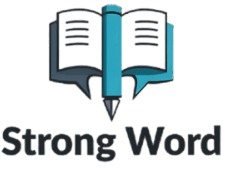In today’s fast-paced business environment, effective purchase order management is crucial for maintaining operational efficiency and ensuring smooth supply chain processes. A well-structured purchase order management system can help businesses streamline their procurement processes, enhance supplier relationships, and ultimately save time and money. This article delves into the key aspects of purchase order management, its benefits, and best practices for implementation.
**Understanding Purchase Order Management**
At its core, purchase order management refers to the process of creating, tracking, and managing purchase orders throughout the procurement cycle. A purchase order (PO) is a formal document sent by a buyer to a supplier, outlining the details of the products or services being ordered, including quantities, prices, and delivery dates. The purchase order serves as a legally binding agreement once accepted by the supplier, ensuring that both parties are on the same page regarding the transaction.
**The Importance of Efficient Purchase Order Management**
1. **Cost Control and Budgeting**: One of the primary benefits of effective purchase order management is improved cost control. By tracking POs, businesses can monitor their spending, compare actual costs against budgets, and identify any discrepancies. This oversight helps organizations make informed purchasing decisions and avoid unnecessary expenses.
2. **Enhanced Supplier Relationships**: A streamlined purchase order process fosters better communication between buyers and suppliers. By providing clear expectations and timely updates, businesses can build stronger relationships with their suppliers. This transparency not only helps in negotiating better terms but also ensures that suppliers are more likely to prioritize orders and deliver on time.
3. **Increased Efficiency**: Automating purchase order management can significantly reduce the time spent on manual tasks, such as data entry and order tracking. By utilizing technology, businesses can minimize errors, speed up the procurement process, and free up employees to focus on more strategic activities.
4. **Improved Inventory Management**: Effective purchase order management directly impacts inventory levels. By accurately forecasting demand and aligning orders with inventory needs, businesses can avoid stockouts and overstock situations. This balance is essential for maintaining operational efficiency and meeting customer demands.
**Best Practices for Implementing Purchase Order Management**
To harness the full potential of purchase order management, businesses should consider the following best practices:
1. **Centralize Your Purchase Order Process**: Establish a centralized system for managing purchase orders. This can be achieved through dedicated software solutions that allow for easy tracking and communication. A centralized system ensures that all stakeholders have access to real-time information, reducing the likelihood of miscommunication.
2. **Standardize Purchase Order Templates**: Create standardized templates for purchase orders to ensure consistency in information and formatting. This practice helps minimize errors and makes it easier for both buyers and suppliers to process orders efficiently.
3. **Train Your Team**: Invest in training your procurement team on the importance of purchase order management and how to use the chosen systems effectively. A well-informed team is better equipped to manage orders and handle any issues that may arise.
4. **Utilize Technology**: Consider leveraging technology solutions that specialize in purchase order management. These tools can automate various aspects of the procurement process, from order creation to tracking and reporting. Automation not only increases efficiency but also provides valuable insights into purchasing patterns and supplier performance.
5. **Monitor and Analyze Performance**: Regularly review and analyze purchase order data to identify trends, inefficiencies, and areas for improvement. By continuously monitoring performance, businesses can make data-driven decisions that enhance their procurement strategies.
**Conclusion**
In conclusion, effective purchase order management is a vital component of successful business operations. By implementing best practices and leveraging technology, organizations can improve their procurement processes, strengthen supplier relationships, and achieve significant cost savings. A robust purchase order management system not only streamlines operations but also positions businesses for long-term success in an increasingly competitive marketplace. Embrace the power of efficient purchase order management to drive your business forward.

